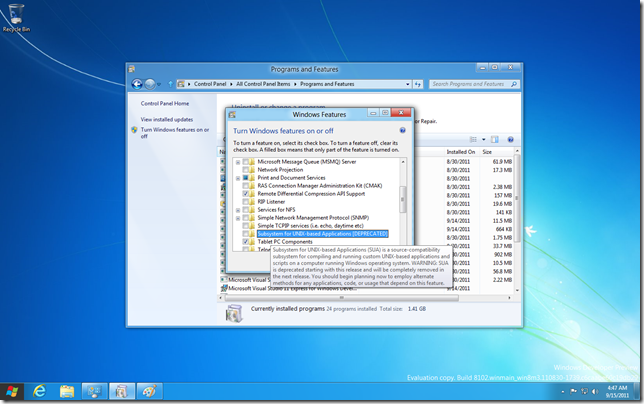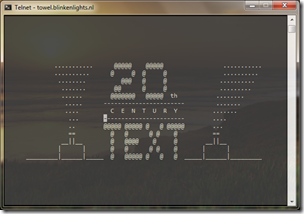Windows 8 Metro + Desktop: Give it a Chance
September 16, 2011 Leave a comment
When I first heard about the idea of the Metro-style UI from Windows Phone 7 being incorporated into Windows as a wholesale replacement for the traditional start menu, I was extremely skeptical that it would work on a professional desktop. Things like the Ubuntu Unity and Gnome 3 environment are horrible. I don’t get the point of the Launchpad in Lion because it’s just superfluous. The concept of putting the Metro phone UI in to replace the start menu seemed just crazy to me.
I have downloaded the developer preview of Windows 8. After I booted up for the first time, it was disorienting for a few minutes. It reminds me of when I booted Windows 95 for the first time and was thinking where’s progman and this explorer view is weird, can I get fileman back?
But after a getting my bearings, I realize that I can do everything I could before with about the same effort and very similar behaviors but there is this cool news stuff in there.
The Metro Start screen completely replaces the classical Start Menu from Windows 95, but even though it takes up the entire screen and looks very different with the tiles, it can do all of the stuff the Win7 Start Menu did.
First of all win + type stuff initiates a search just like in Windows Vista and 7, the UI is different but the functionality is the same. Next, any time you install a classic or what Steven Sinofsky called a “professional app” in his keynote, the icon is added to your Start screen. It is also available by browsing an alphabetical list of apps which you can get to from the “Seach Charm” which you access by hovering your mouse on the bottom-left where the Windows pearl is on Win7 or by using a swipe from the right edge touch gestures. Right-clicking on any tile that links to an applications that supports a desktop mode reveals an option to pin it to the desktop taskbar.
Alt+Tab and Win+Tab flip through applications pretty much as you would expect. The Win+Tab Aero Carousel effect is gone and you get the Metro swipe-from-left app switching where one of the screens is the desktop. Win+Tab is particularly useful if you have an app docked on the side of your screen and want to flip between the desktop and another Metro app.
I think this description sounds more convoluted than it is. The point is that everything works surprisingly well considering this is an alpha quality build. All of the old keyboard shortcuts and mouse behaviors work the same way.
The idea of having Metro apps docked on the side while using most of the screen for the desktop is very cool. the Metro demo apps are beautiful. A great example is the built-in RSS reader. It is just gorgeous, for consuming photo blogs. Any blog which publishes its entire content into the feed gets a really nice columnar newspaper-style layout. I’m convinced the Metro stuff is worthwhile and that Microsoft will successfully blend the classical Desktop and the Metro UI into a coherent and usable whole, although I suspect that phones and ARM-based tablets will not have the Desktop.
On with the screen shots.
Metro News App Columnar Text View
Metro News App Displaying a Photo Blog








